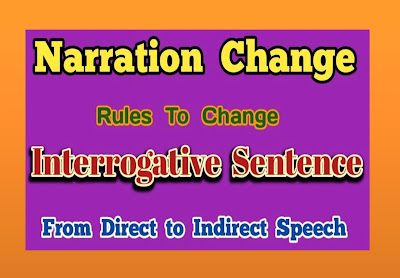SOLO Taxonomy
SOLO Taxonomy
Summary
This describes the importance of assessment as a tool for developing an effective learning environment in the school. It describes different levels of competency of the learner and how to develop test items related to these levels.
Learning Outcomes of the Session
·
To share
the concept of SOLO taxonomy with participants
·
To help
them understand the competency levels as given by SOLO
·
To enable
them to identify the level of SOLO for each test item
·
To practice
the development of test items for different competency levels of SOLO for a
single concept of different subjects
SOLO stands for:
Structure of Observed Learning
Outcomes There are five ‘level’ at
which we can classify a student response to an examination question
·
Pre –
structural
·
Uni-
structural
·
Multi-structural
·
Relational
·
Extended abstract
Understanding The Level Of Questions and Level of Responses
Pre-structural Level
·
Pre-structural is that in which students respond
to a question in a meaningless way or irrelevantly. Some time the children are incapable of
responding or do not wish to respond as required from them
·
Here is an example of pre-structural level in
which the student response is a repetition of the question. This indicates the
most undeveloped or basic level of learning response.
Question: What is your name?
Answer:
What is your name?
Uni-structural
·
This set of
responses uses only one relevant element of data from the stimulus item.
·
A feature of
responses at this level is the desire to close quickly and to ignore variation that
may result from the response.
Example of Uni – structural Questions
Some examples of
questions that will only allow a Uni-structural answer
1 the symbol of 50 in
Roman Numerial is (a) V (b)
x (c) L (d) C
2. Circle the right
answers. Children hear by (a) teeth (b) Lips
(c) Ears (d) Eyes
3. For a balanced
economy, how much part of the area of a country should be under forests.
4. Write an essay on: “What
I did on the week end”
Uni-structural answer
On the week end I went to
grandma’s house
5. Expression 130-20*3 is equal to (a) 70
(b) 110 (c)
330 (d) 60
6. Circle the group of words,
which are nouns.
(a) That, This, My, His
(b) Tree, Plates,
Those, Aress
© Apple, Lion, Umbrella, Monkey
(d) Birds, These, Coats, Those
Multi-structural
·
The learner
at this level can use multiple data elements, but the elements are not
integrated.
·
Hence the
response can consist of a number of discrete closur.
·
Typical of
these responses would be the following of strict algorithmic procedures that
involve a number of steps. However, if a single step was forgotten, or an error
made, the respondent would be unable to reconstruct the algorithm.
·
This lack
of an overview of the data elents and their relationships makes the response
patterns unstable and thus considerable variability may be expected from
children responding at this level.
Example of Multi-Structural Questions
1.
Circle the
group of all rhyming words
(a)
Pair, Park,
Peak, Pot
(b)
Dog, Duck,
Dear, Desk
(c)
Cup, Put,
Hut, Nut
(d)
Buy, Cry,
Sky, Fly
2.
Circle the
correct answer.
(a)
Islam Abad
is the capital of Pakistan
(b)
Islam Abad
is the capital of pakistan
(c)
Islam Abad
is the capital of pakistan
(d)
Islam Abad
is the capital of Pakistan
3.
Which provincial
areas of our country are devoid of forests?
4.
“what I did
on the weekend” question
Multi- Structural answer
I went to grandma’s house and I
watched football and played with my friends and I had ice-cream on Sunday and I
helped with the harvest.
5.
Solution of
expression 10-(-2-1) is (a) 4
(b) 6 (c)
8 (d) 10
6.
A person
went to market he purchased 3 apples at the rate of 5 rupees per apple. After
purchase he has 2 rupees in his pocket. Find the amount with which he went to
market?
(a)
15
rupees (b) 17 rupees (c) 30 rupees (d) 13 rupees
Relational
·
A relational
response reflects the ability to integrate the elements and operations of the
question in way that enables an overview of the stimulus items
·
Children using
an algorithm at this level would be able to check for errors and
inconsistencies, and would be able to reconstruct missing elements of the
algorithm.
·
Features of
responses at this level include the ability to reverse operations.
·
Often an
indication of cause and effect in the answer is an indication of relational
level thinking.
Example of Relational Questions
1.
Area of
shaded region in
3
|
3
|
3
|
2
|
2
|
(a)
9
(b) 24 (c)
27 (d) 45
2.
If the area
of rectangular regions is 48 cm2 and its length is 1cm then its width would be?
3.
How did the
forests improve the environment and help in socio-economic development of a
country?
4.
What is
acid rain? What its effects on animals and plants. Why should alternative
sources of energy be used instead of oil and coal to reduce pollution?
5.
“What I did
on the weekend” (question).
Relational answer
·
We were
going to the beach but it started to rain so we decided to go to grandma’s
house. We were lucky that we decided not to go to the beach because the road
flooded during the storm and we would not have been able to get home until the
next day.
·
Sometimes we
cannot determine if a student is operating Multi-structurally or relationally
just from their answer. We need to know how they found their answer.
·
Consider 156+93+44
·
Is there a
difference between?
(156+93) then
adding 44 and (156+44) then adding 93







Comments
Post a Comment